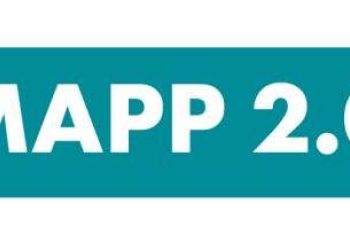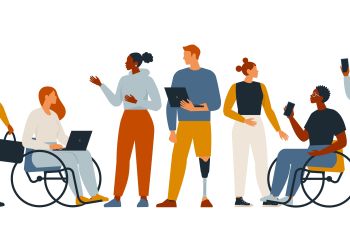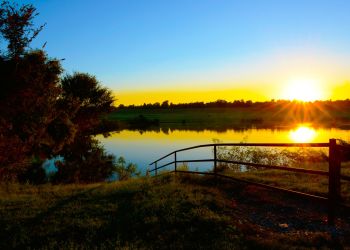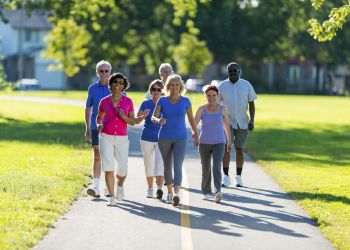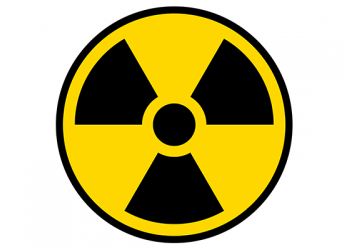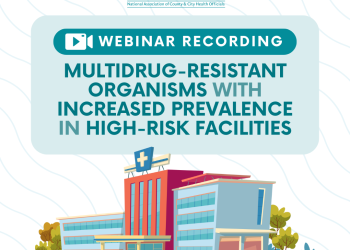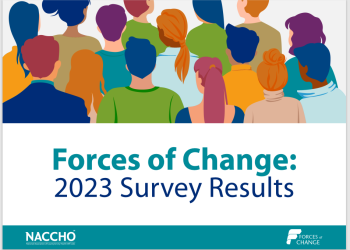California’s fall fire season started on Oct. 1, and after only a week, more than a dozen wildfires raged across Northern California. California Governor Edmund G. Brown Jr. issued an emergency proclamation for Butte, Lake, Mendocino, Napa, Nevada, Orange, Solano, Sonoma and Yuba counties and activated the State Operations Center. On Oct. 10, the President approved California Disaster Declaration to support the state and local response. Local health departments are on the forefront of responding to natural disasters like wildfires, and dedicated staff are on call 24-hours a day, every day, to respond when needed.
Local Health Departments’ Role in Wildfire Response
During wildfires, public health has a critical role in response and helping communities recover. Local health departments (LHDs) are responsible for advising emergency management and state and local authorities on the health impacts of wildfires to inform and support response actions (e.g., residential and healthcare evacuations, air quality assessments). LHDs communicate with the public about the health risks of smoke and recommended actions to protect their health. Additionally, LHDs provide staff and resources to support evacuation centers and shelters for those displaced by the wildfires.
Situation Report
On Oct. 8, multiple fires broke out throughout Northern California; due to the state’s vast drought, low humidity and high winds over 60 miles per hour, fires grew rapidly and uncontrollably, burning more than 115,000 acres and forcing more than 20,000 people to evacuate their homes. Many healthcare facilities, including hospitals and skilled nursing facilities have been affected. Two hospitals in Santa Rosa were evacuated and as of Oct. 12, 23 deaths have been reported. Information and support hotlines have been set up across several agencies. As of Oct. 17, 50 percent of fires are contained, there are 41 confirmed deaths, 200 missing and more than 90,000 in shelters.
The California Department of Forestry and Fire Protection (CAL FIRE) has deployed hundreds of firefighters and personnel to the affected areas and are frequently updating their incident information website. Local officials in Northern California have issued advisories and press releases with specific instructions and information on health effects, evacuations, and emergency centers. Bay Area Air Quality Management District, the air pollution control agency for counties around San Francisco Bay, has issued health and smoke advisories, urging its residents to protect their health due to the unprecedented levels of air pollution from the wildfires. For more information on the specific counties, visit the following county resources:
Health Impacts
Wildfires can create widespread threats to public health and the environment. Smoke, ash, toxins, and dust can affect air quality. Wildfire smoke contains a mixture of chemical, gases and fine particulate matter (PM2.5), which is the main pollutant of concern in smoke since it can penetrate deep into the lungs. Smoke inhalation can cause immediate health effects, like coughing, stinging eyes, scratchy throat and trouble breathing normally, and can also lead to heart attacks, strokes and severe respiratory effects, including asthma attacks and acute bronchitis. People with heart or lung disease, older adults, and children are most at risk. Susceptible individuals also include pregnant women, newborns and people with obesity or diabetes.
Resources
The National Association of County and City Health Officials (NACCHO) is activated for the California wildfire events to provide assistance and support to LHDs during their response and recovery efforts. We extend our gratitude and support to the firefighters, first responders, public health, emergency management, healthcare professionals and other partners and individuals who are working around the clock to contain these fires and to help their communities. NACCHO has compiled a list of resources to help affected LHDs, healthcare professionals, first responders and the general public to respond to and recover from these events.
Response
- Resources for LHDs
- Wildfire Smoke: A Guide for Public Health Officials is designed to help local public health officials prepare for and respond to smoke events, and includes guidance on how to communicate with the public about wildfire smoke and health.
- Resources for responders and healthcare professionals
- The National Institute of Environmental Health Sciences’ Wildfire Response Orientation is an awareness-level health and safety resource for wildfire responders.
- Particle Pollution and Your Patient’s Health is an evidence-based training for healthcare professionals that describes the health effects associated with particle pollution exposure and provide educational tools to help patients understand how they can protect their health.
- Resources for the public
- The California Department of Forestry and Fire Protection Ready for Wildfire app shares instructions, checklists and guidance on how people can protect their home, family and property. It also provides wildfire alerts based on a chosen zip code or within 30-miles of a user’s location.
- California Statewide Fire Map provides general locations of major fires burning in California.
- AirNow is a system developed by the U.S. Environmental Protection Agency, National Oceanic and Atmospheric Administration, National Park Service, tribal, state, and local agencies to provide the public with easy access to national, real-time air quality information. Based on the Air Quality Guide for Particle Pollution, individuals can reduce their exposure to particle pollution and protect their health.
- The Centers for Disease Control and Prevention has public health information on how individuals can protect their family and evacuate safely during a wildfire.
- Oregon Health Authority’s Wildfire Smoke and Your Health Factsheet offers information about the main public health effects of smoke exposure.
Risk and Emergency Communications
- Oregon Health Authority’s Crisis and Emergency Risk Communication Toolkit for Wildfires was designed to assist with messaging during and after a wildfire event.
- Risk Communication Toolkit for Local Health Agencies includes guidance for speaking with the media during and following emergencies.
- Social Media Public Education Toolkit for Emergency Response which includes sample messages for a wide range of threats including flooding and storms.
Emergency Shelters
- Emergency Shelter Communications Toolkit offers information and guidance to provide widely accessible communications in an emergency shelter situation; it includes information to be used in shelter preparedness planning and activities, in addition to just-in-time implementation.
- Flagler County Health Department’s Special Needs Shelter Plan includes activities for both the preparedness and response phases and contains forms, supply lists, and job action sheets.
- The Standard Operating Guide for Emergency Shelter Operations outlines authorities, policies, organizational arrangements, operational concepts and procedures for emergency public shelter services.
Mental/Behavioral Health
- Psychological First Aid is a training guide for responders, healthcare and public health professionals to assist communities in moving forward following disasters and public health emergencies.
- Psychological First Aid fact sheet to support healthcare professionals.
- Psychological First Aid Field Operations Guide provides guidance to local Medical Reserve Corps units.
Recovery and Clean-up
- For responders and clean-up workers
- The Occupational Safety and Health Administration has a list of resources for responders and workers involved in cleanup operations.
- Centers for Disease Prevention and Control’s Worker Safety during Fire Cleanup Factsheet has information for worker and volunteers involved in wildfire clean-ups.
- For the general public
- The California Environmental Protection Agency has information on fire response and recovery, and wildfire debris management and disposal.
- The County of San Luis Obispo has recovery and clean-up information for the general public and business owners.
As part of NACCHO’s activation for the California wildfires, we are participating in regular situational awareness briefings with federal agencies, national associations, and private sector partners. We are sharing information and resources with local health departments, as needed. We will continue to update this website as new information becomes available. LHDs with questions or other needs related to the wildfires should contact NACCHO’s Preparedness team at [email protected].
